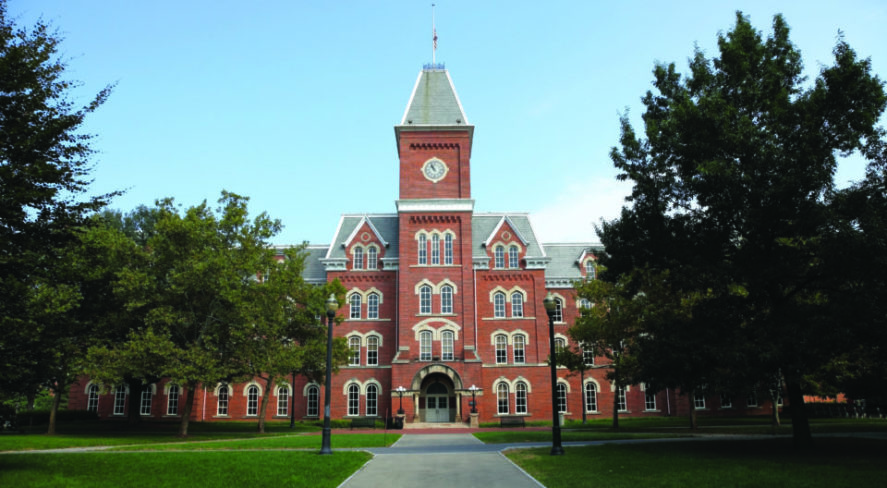Higher Security for Higher Education: Achieving Safe, Secure Learning Environments

Securing college campuses requires strategy, collaboration and integration

On April 30, 2019, two students were killed and four others were injured in a shooting at the University of North Carolina at Charlotte. On May 7, a Savannah State University student was injured in a residence hall shooting. And while mass shootings rightfully demand the nation’s attention, the majority of campus violence is unrelated to gunfire. In 2016, there were 28,400 reported criminal incidents (including burglary, vehicle theft, sexual assault, and hate crimes) on college campuses in the United States, a number that reflects a 32 percent increase since 2001.
In other words, the risks to students has never been more apparent.
The Impact of Campus Violence
Incidents of violence have a profound impact on students’ academic performance and mental health. One study found that violence is associated with significant decreases in grade point average, which often makes students more likely to leave an institution. Exposure to violence also negatively affects mental health, leading to anxiety, depression, even suicide. Faculty and staff are also likely to experience these effects. In addition, an institution could suffer damage to its reputation and ability to attract students and premier faculty.
Educators, administrators, and campus security strive to minimize exposure to danger while maintaining an open, comfortable, welcoming place for students to learn. As incidents continue to occur and risks continue to evolve, a broad understanding of security is more important than ever.
The Benefits of Practice
Creating safe and secure campuses starts with effective emergency plans and processes. What happens when there is a fire alarm? A problem in a lab? An active shooter? If the dorms or academic buildings must be evacuated, where is the rally point and how is accountability addressed?
Administrators and security staff must know exactly what to do in each of these situations and many others. And the time to learn these processes is not during an emergency.
The National Fire Protection Association (NFPA) fully understands the implications here, and thus has developed a new provisional standard, NFPA 3000 (PS). This standard is designed to identify minimum program elements needed to organize, manage and sustain active shooter/hostile event response (ASHER) programs to reduce risks and effects on schools and other organizations.
Securing campuses is not just about having an emergency plan, though. It is also about practicing that plan, running drills, and studying the research so that, in the event of an emergency, everyone can react appropriately.
Creating an Ideal Campus Environment
Colleges and universities are, at their core, about learning and research, so creating a campus environment that enables the educational mission of the school is central to success. Ideal learning and researching environments are those where all students, faculty and staff feel safe and secure. And while it is a more challenging responsibility than ever, it can be achieved when everyone is working together.
In addition to having a well-designed and well-practiced emergency plan, campuses must strategically align security into all daily operations and take a proactive approach to emergency management. Ensuring a reasonable level of security for all students, staff and faculty means creating and implementing the right security strategies, as well as integrating the right technologies.
In the event of an emergency, situational awareness is paramount. Knowing what is going on in and around the campus enables personnel to identify, process, understand and respond to the information at any given time. The steps below outline how forward-thinking campuses are creating safe and secure environments that remain a welcoming place for students, faculty and staff.
1. Define the Organization’s Security Objectives
While universities may share many of the same security concerns and objectives, each campus is unique with respect to location, buildings, students, community and access to capital, and all of these factors will influence an institution’s specific objectives.
An effective approach to campus security will depend on the security mission and objectives in order to determine the strategies, processes, technologies and equipment that will be used. Be sure to consider how these strategies will affect the campus population and surrounding community while creating an environment that cares about the security and safety of its occupants. Success here may mean starting with the most critical areas first and designing a program that is in line with both budget and staff resources.
2. Secure the Perimeter of the Campus
Keep intruders out and regulate access to campus facilities by securing the perimeter. Most organizations rely on a combination of security technologies, natural and artificial barriers, and other fortifications like window film. Remember that campus facilities extend beyond residence halls and academic spaces and include green spaces, athletic fields, and other gathering spots.
3. Control Access to Campus Buildings and Secure Areas
Access control is an ideal way to balance the need for an open and welcoming campus with the responsibility to protect the people within. The system should include a range of technologies that control building entry and egress while also hardening the building perimeters.
Look for solutions that will help control entry to the campus and other secure areas and generate an alarm if a door is propped open or there is unauthorized access. In addition, an access control system should create a record of who enters and leaves buildings or areas, as well as integrate with video surveillance solutions to verify incidents, enable more effective responses, and provide necessary information for forensic review.
4. Install Intelligent Video Systems that Perform Analytics and Provide Alerts
Video surveillance technologies are not new to security operations, but the latest solutions offer smart cameras that provide high-quality, searchable digital video. And these intelligent cameras do far more than capture video; they can analyze the scene and recognize people and objects that are out of place or inconsistent with typical campus activities.
For example, when the campus perimeter is properly configured with an intelligent video solution with license plate recognition, the system will recognize when a vehicle has driven around campus multiple times over the course of a day and flag the incident for additional investigation. Gone are the days of assigning a person to watch security camera feeds. These new systems automatically detect motion and begin recording, which helps activate emergency plans and simplify follow-up investigations.
5. Integrate Technologies to Increase Efficiency and Enhance Situational Awareness
Many campuses rely on a variety of disparate systems to monitor and manage access control, video surveillance, and other building systems, and most of these systems require a high level of human interaction. This disconnectedness increases the risk of human error, delays response times, and impedes the ability to respond quickly and effectively to an emergency.
By integrating individual security systems to function as one unified solution, administrators and campus security improve their situational awareness. Adding other solutions, such as shot detection devices, makes the integrated system even more robust and supportive of effective emergency plans.
6. Deploy a Mass Notification System
Another vital component to emergency plans is communication. Research shows that people are more likely to take a warning seriously if they receive it more than once and from multiple sources. Thus, administrators must be able to get the right messages to the right people at the right time so emergency responders can move to the scene, so faculty, staff and students know where to go and what to do, and so parents and the public stay informed, and misinformation and panic is contained.
The right mass notification system will quickly, reliably and accurately get emergency and routine communications sent to and received by the right people, no matter where they are or what they are doing. These solutions, when properly implemented and configured, can also support colleges’ and universities’ efforts to comply with the NFPA 3000 provisional standard.
7. Perform Maintenance and Install Updates to Security Systems
Security systems function day and night, 365 days a year, and they require scheduled maintenance, as defined by the manufacturer and regulatory agencies. A gap in maintenance could put the entire system at risk.
Proactive, preventive maintenance, including software and firmware updates where appropriate, helps ensure that access control, intrusion detection, video surveillance, and other security systems are fully functional and available around the clock to secure the campus, students and staff, and valuable university assets. As important as it is to maintain any equipment, system or technology in a building, it is especially critical to ensure that the components that protect building occupants are kept fully operational.
Facing Complex Security Challenges
Colleges and universities face a range of security challenges today. Personnel must anticipate threats, secure and monitor complex campus environments, and control access to facilities, all while maintaining an open and welcoming environment. A layered approach to campus security, which includes emergency planning and practice, physical security measures, and intelligent technologies, is required to enable campus security officers to achieve their ultimate goal: a safe, secure learning environment for students, faculty and staff.
